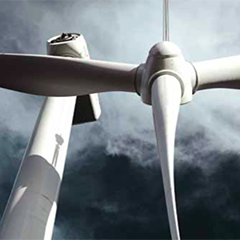Bigger, taller, faster – all clear trends, when looking at the evolution of wind turbine technology over the past ten years. Reducing the cost of energy is the constant target, and engineers are pushing the boundaries of blade length and tip speeds to increase annual energy production (AEP). PES presents an exclusive despatch, courtesy of LM Wind Power.
On the promising, new frontier of technological advances and market growth, the wind industry has also discovered a new challenge: blade leading edge erosion. As Lead Engineer for LM Wind Power’s Materials Qualification and Technology Department, Michael Drachmann Haag knows this challenge well.
“Ten or even five years ago, leading edge erosion mostly occurred in the most extreme environments, such as the west coast of Scotland where blades faced massive amounts of rain and wind,” he says. “But, in the hunt for improved cost of energy through higher tip speeds, leading edge erosion is becoming much more dominant.”
Drachmann Haag and his team chose to face the erosion issue head on – presenting on this topic at the 2013 European Wind Energy Association (EWEA) annual event in Vienna and continuing today as a leading industry voice on erosion obstacles and solutions. As the world’s leading supplier of wind turbine blades, LM Wind Power engineers are on the forefront of understanding the erosion challenge, developing tested and reliable leading edge solutions and advocating new design standards for the wind industry.
Understanding the erosion challenge
So, why is erosion on the blade leading edge a problem? As always, reducing the cost of energy is key.
During operation the leading edge is exposed to wear and tear over time, which results in blade material surface deterioration and increased surface roughness – and thus reduced AEP. This leading edge surface erosion increases dramatically with increased rotor speed. Additionally, certain wind turbine environmental conditions – such as rain, hail and particle impacts -can cause leading edge erosion if the blade is unprotected. And as luck would have it, one of the world’s largest wind markets, China, is also home to severe monsoons.



























